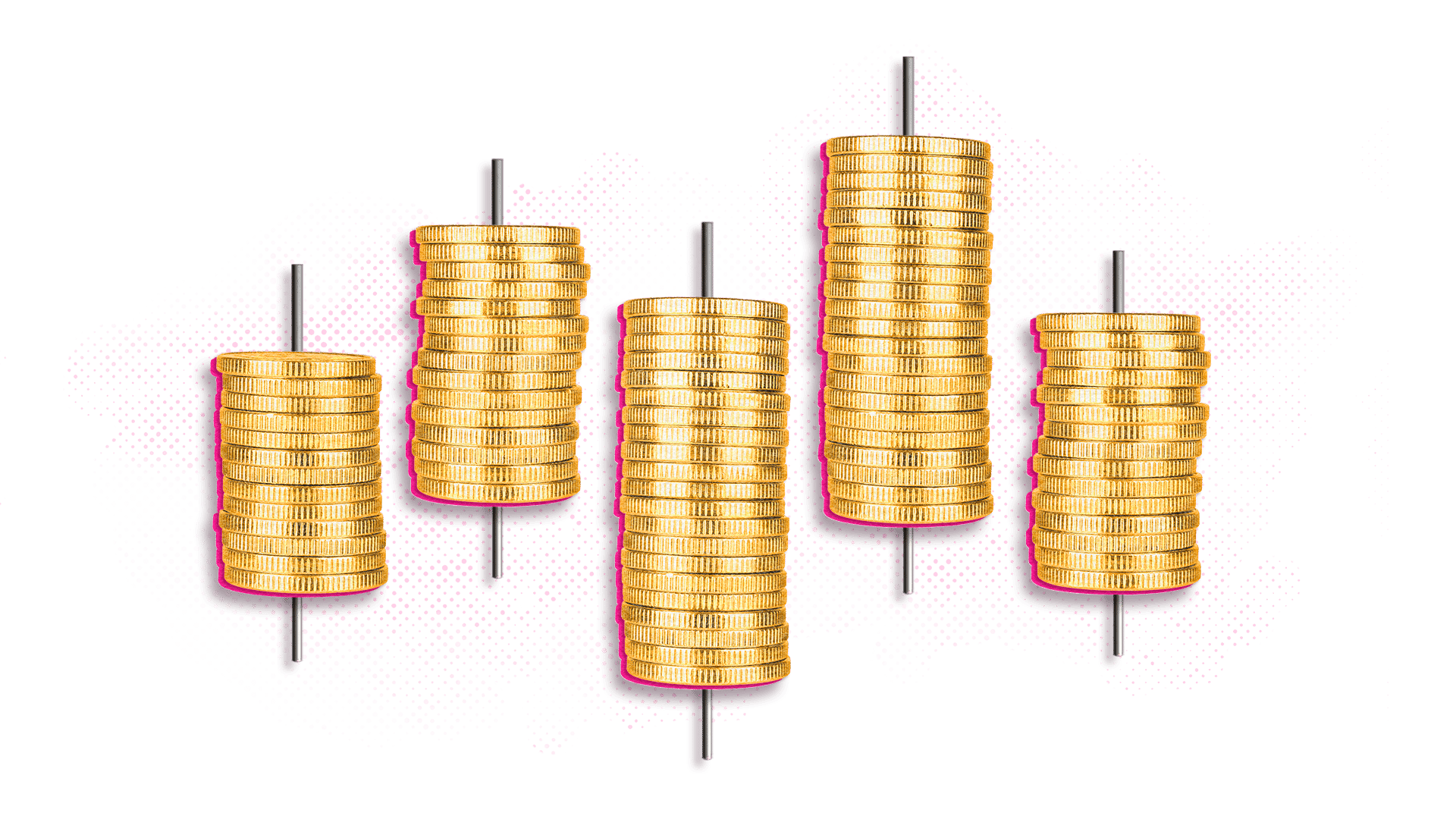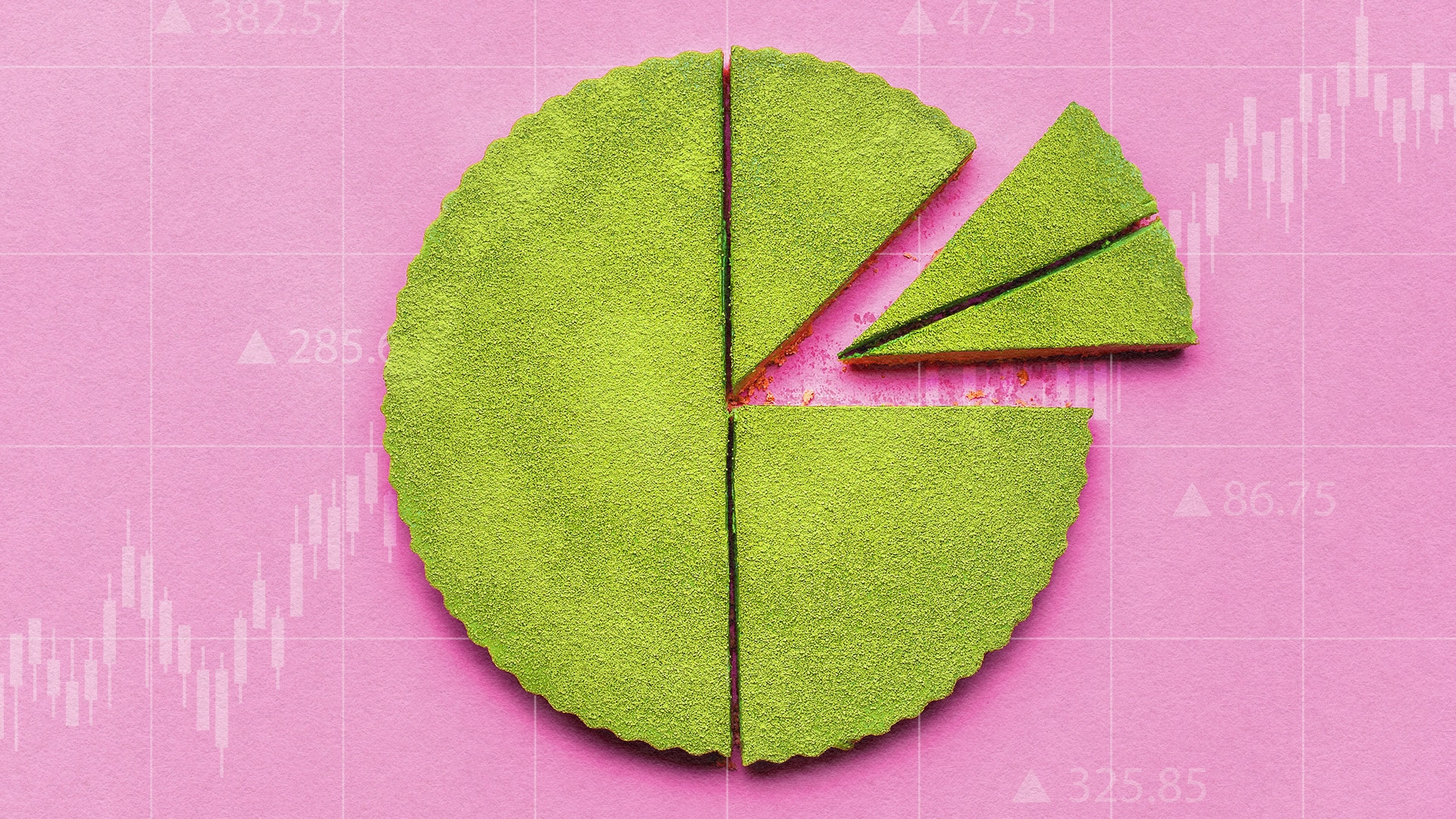- What is the stock market?
- Who can list on a stock exchange?
- How are stock prices determined?
- What is a Stock Market Index?
- What is a Bear and Bull stock market?
- What do you get for being a shareholder?
- How do I make money from investing in the stock market?
- What is stock trading?
- How to buy stocks in Canada
- How to invest in the stock market
- Frequently Asked Questions about Stock Market
Over the last few years, many Canadians have become do-it-yourself investors. A number of trading apps have made it easy for anyone with a phone to buy and sell stocks, and an explosion of online tools and analysis has made it possible to perform high-quality research on your investments. But the stock market can be unforgiving if you don’t know how it works or you’re unfamiliar with its ups and downs. It’s easy to lose money, let your emotions take over, deviate from an investment plan and get lost in a sea of data.
At the same time, you don’t need to be a trained economist to invest and grow your wealth. People of all ages, backgrounds, income brackets and financial savviness have successfully grown their savings retirement and other important goals through investing. To begin, DIY investors should understand how the stock market operates. We’re going to help you do that.
What is the stock market?
Like farmers’ markets and flea markets, stock markets are spaces where buyers and sellers gather to trade. Though in this case, the goods aren’t vegetables or antique typewriters, but shares — another name for units of ownership equity — in companies listed on a public stock exchange. In the past, traders, acting on behalf of buyers and sellers, would gather on a physical trading floor to execute transactions. That’s why many stock markets are named for the city they’re based in, like the Toronto Stock Exchange or the New York Stock Exchange. Now though, most stock markets operate primarily on digital platforms where the transactions are largely automated. Something to note: While the term “exchange” is used to describe a specific place where trading occurs, the term “market” is an umbrella term used to describe a larger region or country. For example, the New York Stock Exchange is part of the U.S. stock market.
It’s important to note that not all kinds of company shares can be traded on a stock exchange. If a company is private, for example, then a smaller group of people — maybe just the business owner and a few other investors — own all the shares in the company. It’s far more complicated to sell those shares privately than it is on a stock exchange. When a company gets big enough and has enough private shareholders, it may decide to “go public.” When that happens, stockholders can sell their shares to the public on an exchange with the hopes of making a return off their initial investment.
Who can list on a stock exchange?
Here are a few of the factors that may be considered:
Size and market share: These are often key considerations for companies choosing to “go public.” Not only are publicly listed companies typically larger than private ones, they’re also commonly among the top performers within their industry. If they’re not, they may not be able to attract sufficient investor buy-in. Having said that, it’s not just big businesses that choose to go public. Some stock exchanges cater to smaller operations, including companies that don’t generate profits and may only have, say, $500,000 in revenue. Larger operations will generally list on the more popular stock exchanges which get far more investor attention — the largest of which is the New York Stock Exchange (NYSE).
Financial viability: Companies must have sufficient growth-potential or a proven track record of predictable, consistent revenue generation to list. The process typically involves a comprehensive financial audit component so financial viability — past, present and future — plays a key role in the decision.
Fee: It usually costs a company a significant amount of money to get listed on an exchange — anywhere between $10,000 and $200,000 for the Toronto Stock Exchange — and then a lot more to handle the obligations that come with being a public operation. If a company can’t afford the initial fee, there isn’t much chance they’ll be able to handle the ongoing financial obligations of staying listed.
Trading rules/requirements: To ensure a level playing field for investors, regulators and the exchanges themselves impose numerous rules on public companies. For example:
- They must publish financial statements (usually every three months)
- They must hold annual meetings where a board of directors is elected or affirmed to represent shareholder interests. (The board serves as the boss that the company’s chief executive officer reports to.)
- Company insiders — management, directors and major shareholders — are forbidden from trading stock in the company if they know key information that has not been publicly disclosed to all shareholders.
How are stock prices determined?
The terms stocks, shares and equities can be used interchangeably — They all refer to portions of the company’s overall equity. If you add up the value of all the company’s shares in circulation, you get what’s called shareholder equity or market capitalization. You can also think of it this way: If a company has a $3-billion market cap, then that’s what it would cost to buy every share and take the company private again.
Of course, that number could change. Share prices fluctuate depending on how much investors are willing to pay for a specific share and how much the investor on the other end is willing to sell it for. However, buyers and sellers aren’t picking these prices out of thin air. They’re based on what’s called fundamentals — numbers that come from the company’s own financial statements. Your broker or investing app will readily list a few of them when you look up the stock. Typical information might include earnings growth, revenue increases, debt owing, companies that pay dividends and more. TD Direct Investing’s platform, for instance, lists all kinds of fundamental data investors can use to make decisions about their portfolios including research from analysts. Not all companies and industries are the same, though — businesses in some sectors grow more slowly than others, while companies in certain industries are OK with holding a lot of debt.
If a piece of news comes out that hurts the profit expectations of the stock or its sector, or if any of the company’s numbers fall short, prospective buyers may lower their “bid” price — the level at which they are willing to buy the stock. If the news is positive, existing shareholders may raise their “ask” price — the price at which they’re willing to sell their shares — and the stock goes up.
What is a Stock Market Index?
A stock market index measures and tracks the performance of a specific group of investments (like stocks or bonds), or the performance of the overall stock market (e.g., S&P 500, Nasdaq). Stock market indexes often track key industries like the technology industry or agriculture over time.
What is a Bear and Bull stock market?
These terms are used to describe specific types of widespread stock market trends, as observed during a set period of time. A bull market is said to occur when stocks are up across the board, while a bear market occurs when the average stock falls by at least 20% and stays down for a prolonged period — often several weeks to a few years. The Great Recession of 2007–2009 is a prominent example of a bear market, while most of 2021 fits the definition of a bull market.
How do I make money from investing in the stock market?
Returns are never guaranteed. Investors who earn money from stocks typically find it in two forms: capital gains and dividends.
- Capital gains: The amount the stock price rises over time. (Of course, stocks can also fall, producing a capital loss.) If you buy a stock, and the price goes up over time, you have an unrealized gain. It’s only once you sell it that you get money for holding that share.
- Dividends: Payments that companies make periodically to their shareholders out of profits. This happens most often with large, more mature companies. For example, a company might pay its shareholders $0.10 every quarter, or $0.40 a year, for every share they own. (The income goes straight into the investor’s brokerage account.) If that company’s stock trades for $10 a share, we say it has a dividend yield of 4%.
Say the same stock rises in price to $10.50 by the end of the year. Its total return for that year — capital gain plus dividend — is 9%. (That does not include any additional costs or transaction fees.) That can be more than what a government bond or guaranteed investment certificate will give you, even though those debt instruments are less risky. (This is where the term “risk and reward” comes in — generally, riskier stocks have higher potential rewards.)
What is stock trading?
Different investors take different approaches when seeking to make money in the stock market, depending on their investment philosophy. Here are a few different types of stock trading strategies one might consider:
- Active trading: Some investors focus on trying to anticipate the market and take advantage of price changes day to day. Doing this successfully and with any consistency is extremely hard to do. There will inevitably be other players in the marketplace with more investment knowledge or data and money at their disposal than you and even those investors have difficulty making active trading consistently profitable.
- Day trading: One of the most popular active trading strategies, day trading involves purchasing and selling stocks and other securities within the same day. Day trading strategies allow investors to seize sudden opportunities within the market, but they can also lead to higher transaction fees and demand a lot of attention and time from investors.
- Buy and hold trading: Investors who hope the stocks they own will increase in value over time may employ a “buy and hold” trading strategy. This strategy is considered to be fairly passive, unlike an active trading strategy.
- Position/trend trading: Considered by some to be a passive strategy, and by others an active strategy, position or trend trading involves following general market trends. Position traders look at the direction of the market, either as a whole or within specific industries, to determine the best time to buy and sell securities. For example, they may buy when a trend has newly been established, and sell when things begin to fall back to earth.
How to buy stocks in Canada
You may be investing in the stock market without necessarily knowing it. When you contribute to the Canada Pension Plan, for example, part of the deductions from your paycheque are ultimately invested in stocks. Alternatively, your employer may offer its own pension or a group Registered Retirement Savings Plan (RRSP), including equity funds or an employee corporate ownership plan. If you’re a postsecondary student, you may be drawing funds from a Registered Education Savings Plan (RESP) which likely has some of its funds in the stock market.
These are all perfectly valid ways to use stocks to help grow your wealth. But if you want to participate in the stock market directly, that can be easy too.
The first step is to set up an account with a broker, such as TD Direct Investing. Once upon a time, a broker would have been a person who worked in a stock brokerage, and who made trade orders on your behalf and provided advice around building a portfolio. Nowadays most DIY investors opt for an online or “discount” brokerage that holds your investments and executes your trades, but provides only investor education and market data, not advice.
Most banks, credit unions and other financial institutions offer such services, along with dedicated online brokerages. Typically, there is no cost to set up an account and a single trade can cost approximately $10 or less. A few brokerages, including TD Direct Investing, offer some commission-free investments. TD EasyTradeTM, for example, requires no minimums to start investing, $0 commission on the first 50 stock trades each year, no monthly fees and $0 commissions when you trade TD ETFs.
A few brokerages, including TD Direct Investing, offer some commission-free investments. TD EasyTradeTM,
How to invest in the stock market
When it comes to picking individual stocks, there are a few strategies and approaches to consider.
1. Consider the fundamentals
To help ensure the companies you’re investing in are making money or have the potential to grow, it can be important to look at the fundamentals first, including earnings growth, revenues, free cash flow, year-over-year sales increases. Through your research, you may encounter operations with soaring share prices and no revenue (common among technology companies), doing well because investors think they’ll make money in the future. (Here’s the risk: At some point investors may not want to wait for profits and could start selling.) When it comes down to it, stock prices increase when company earnings rise, so you should be confident that the businesses you are looking at will do well over time before you invest in them.
2. Diversify
When you’re buying stocks, think of yourself as a fund manager. No manager invests everything in one company’s stock because if that company falls apart, so might your savings. Rather, consider buying several stocks across different industries and geographies. This strategy is called diversification and can help protect you from a bad buy. The logic here is that if one business goes belly up, you have a bunch more that can keep your portfolio afloat. The chances of all your stocks going bankrupt at once is unlikely.
3. Buy what you know
With thousands of stocks to choose from, where do you even start? One possible approach that many professional fund managers follow is to buy companies you know, whose products you love. Chances are a lot of other people feel the same way and that can bode well for the stock’s future. If a company is familiar, you’ll also have a much better grasp of how it operates: what it sells, if it’s doing well, if any trouble lies ahead and more. That can make it easier to understand the fundamentals and make an informed decision on whether to buy it or not.
4. Use your discount brokerage’s tools
The actual act of buying and selling stocks isn’t difficult — it’s all supported by your discount brokerage’s website or app. While apps or websites may vary, usually you’ll find the business you want to buy by looking it up, input how much money you want to spend and make a purchase. Again, diversification is important to consider: You might consider purchasing a similar dollar amount of each stock in your portfolio. Make use of the tools within your brokerage’s app or site, too. Most offer stock screeners, which allow you to sort companies by various metrics to compare operations, including revenues, earnings or dividend yield.
However, you choose to invest, getting early exposure to the stock market can make it easier for you to work toward your long-term financial goals, such as saving for retirement or getting your kids through university or college. While the tools and platforms you use to invest may evolve, companies have been selling shares since the Middle Ages and stock markets have existed nearly as long.
Take it slow, follow the fundamentals and you may just find your confidence growing.
![]()
Frequently Asked Questions about Stock Market
What time does the stock market open and close?
The U.S. stock market, including the New York Stock Exchange (NYSE), opens at 9:30am EST and closes at 4:00pm EST, Monday to Friday. International markets will open and close at different hours, depending on their time zones. Stock exchanges typically don’t hold regular hours on the weekend.
It’s important to note that while regular hours are kept most days, individual stock exchanges may open and close at different times, including for “pre-market” and “after-hours” trading or on holidays.
Where does the money go when you buy a stock?
In its most basic sense, the stock exchange matches buyers and sellers of a stock. As a buyer, you could be purchasing a stock from another individual, or from an institution like a pension plan or a mutual fund manager. In this way, a stock transaction could be seen as similar to purchasing a work of art. The original creator would have been paid when they initially sold their artwork. In any subsequent sale of the artwork, the transaction is between the buyer and the seller only.
What are the four categories of stocks?
- Growth stocks: A share that is expected to grow at a rate faster than the market’s average.
- Blue-chip or defensive stocks: A share in a company that has produced reliable results in their industries for decades or even centuries. While these companies may not see sudden or significant growth over a short period, they provide consistent returns over time. Bank stocks, for example, are often called blue-chip stocks.
- New stocks: Portions of a company’s shares that are newly available to purchase. Selling new stock can devalue the pre-existing shares already sold.
- Income stocks: A share that provides most of its return via dividends. These are typically seen with large corporations that have an established foundation and may have little room to grow further.
What is a correction in stock market?
When the stock market falls more than 10% on average, but less than 20%, it’s considered to be a correction. When it falls more than 20%, the market is considered to have entered bear market territory.
Can I make money in stocks as a beginner?
While performance is never guaranteed, by taking a focused approach to investment objectives and research, the potential to make money in the stock market, can exists even for beginners. Novice investors may wish to start slowly and increase their investments as they gain more experience and acumen.









